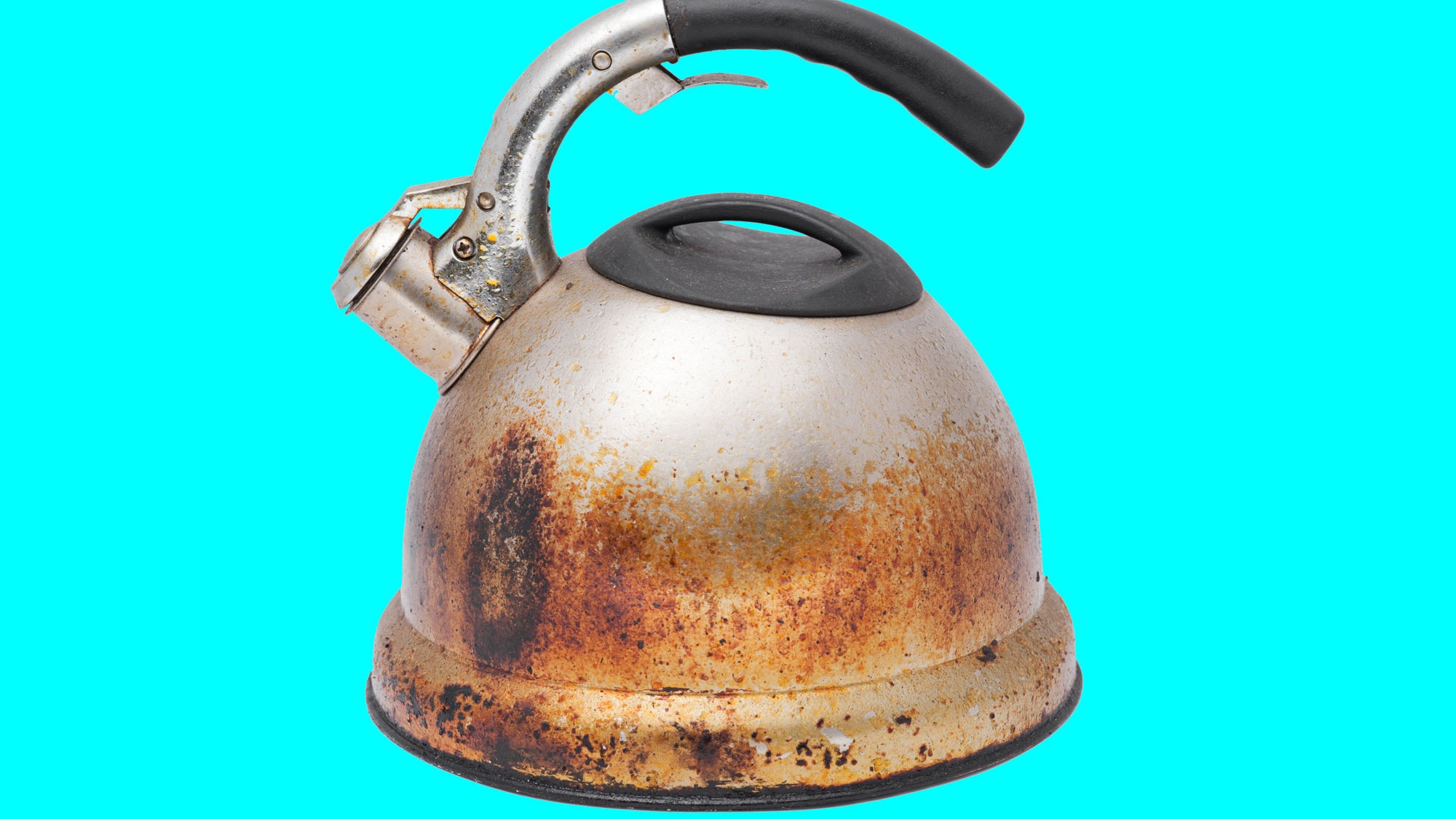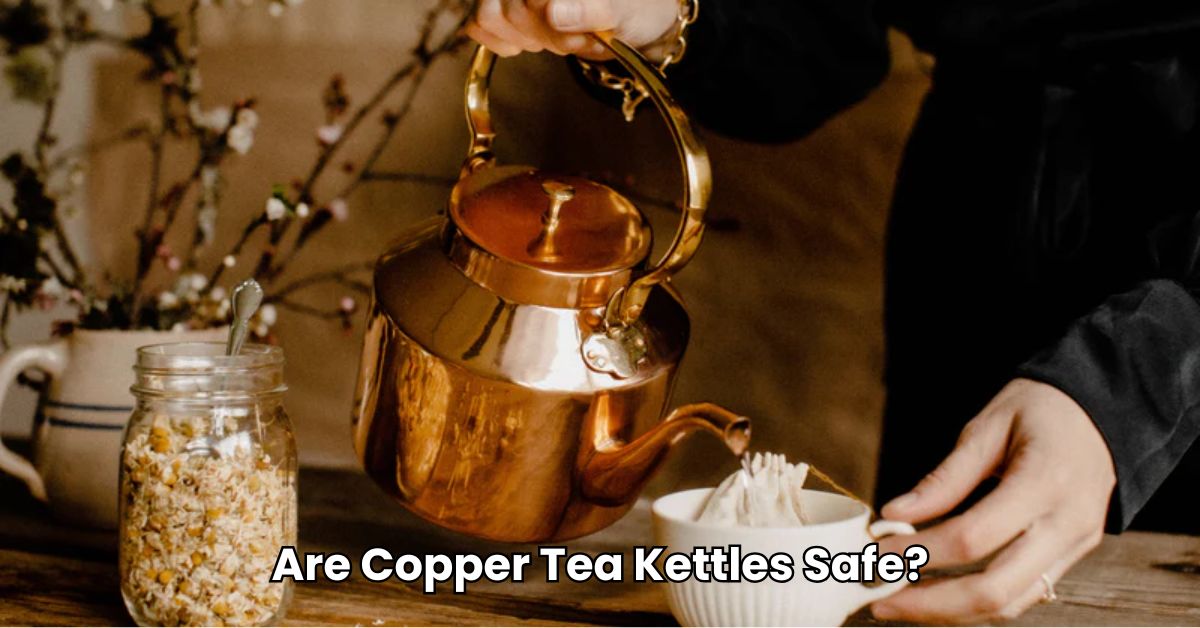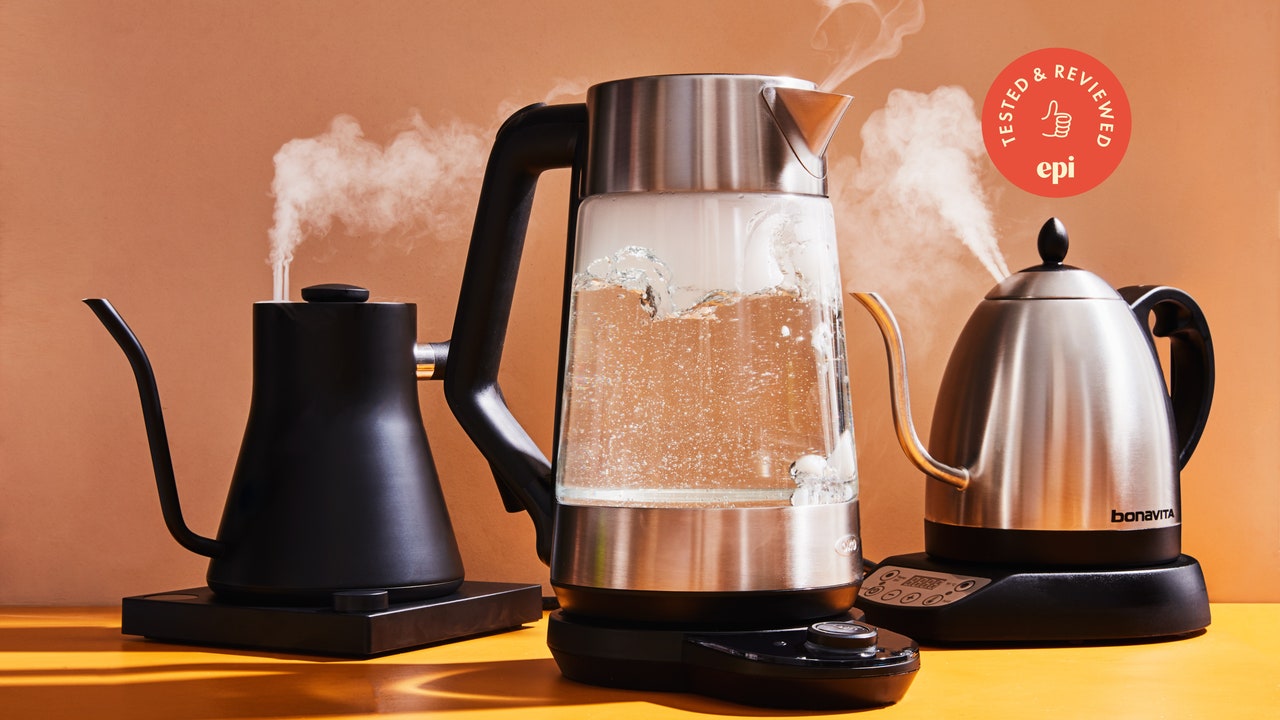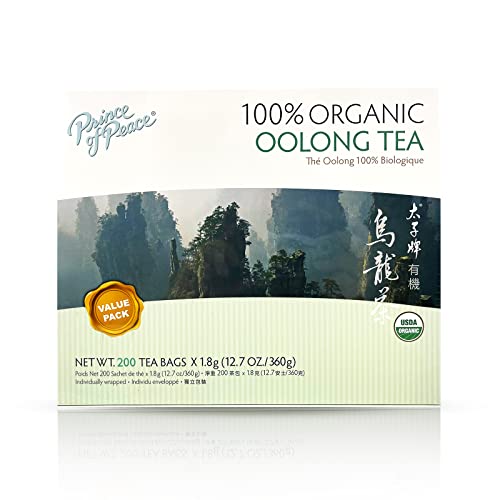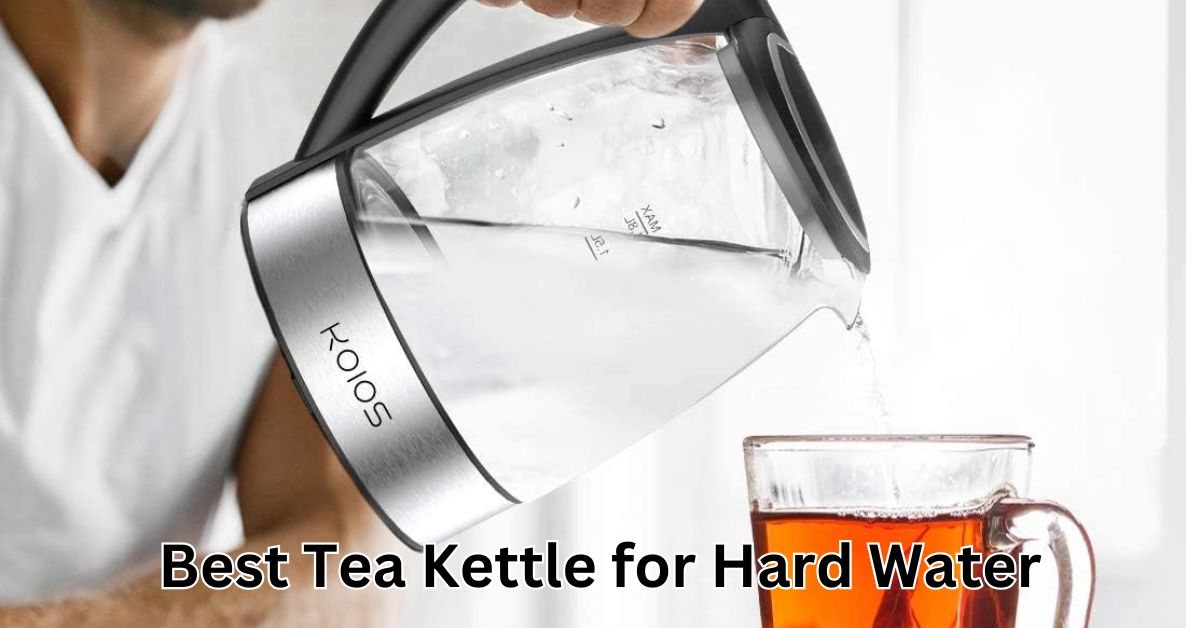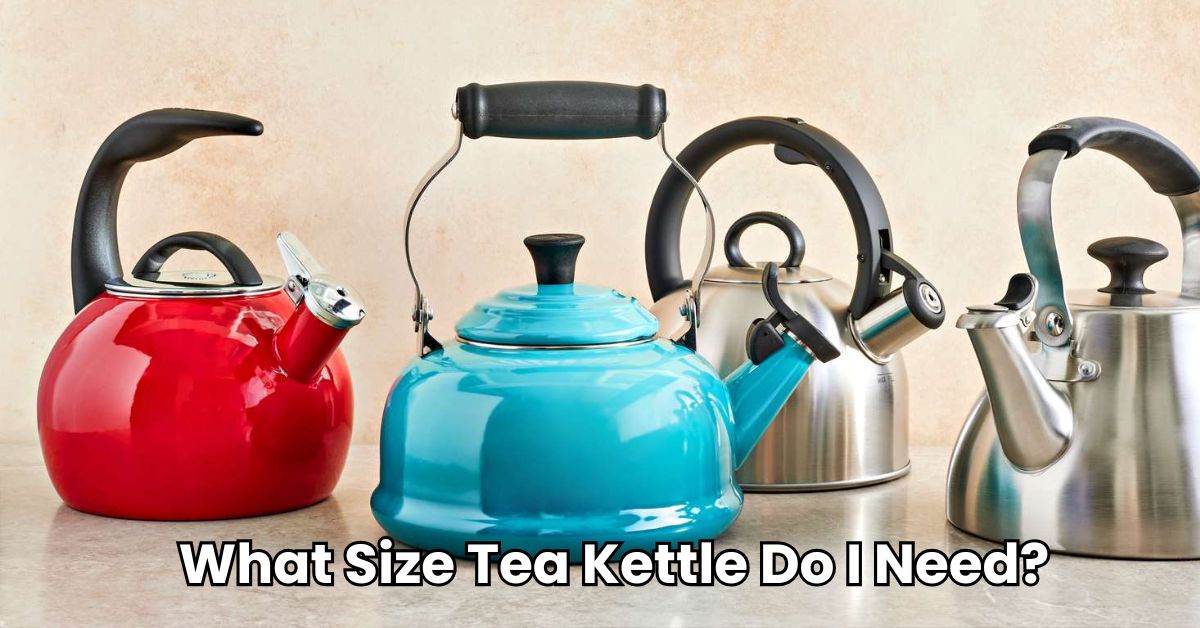Cleaning a stainless steel tea kettle is simple. A few steps can keep it sparkling.
A stainless steel tea kettle not only looks sleek but also provides durable performance. Over time, mineral deposits and stains can build up, affecting its appearance and functionality. Regular cleaning helps maintain its shine and ensures you enjoy the perfect cup of tea every time.
This guide will show you easy and effective ways to clean your stainless steel tea kettle, using common household items. Follow these steps to keep your kettle in top condition, making it a beautiful and efficient part of your kitchen for years to come. Let’s get started on making your tea kettle look as good as new!
Choosing The Right Cleaning Supplies
Cleaning a stainless steel tea kettle is not as hard as it seems. With the right supplies, you can make your kettle sparkle. In this section, we will discuss the essential tools and safe cleaning agents. These will help you maintain your kettle’s shine.
Essential Tools
To clean a stainless steel tea kettle, you need some basic tools. Here are some essential tools you should have:
- Soft sponge or cloth
- Non-abrasive scrub brush
- Microfiber towel
- Measuring cup
- Old toothbrush
A soft sponge is key to avoid scratching the surface. A non-abrasive scrub brush helps remove tough stains. A microfiber towel is great for drying and shining. A measuring cup is useful for mixing cleaning solutions. An old toothbrush can reach small, tricky spots.
Safe Cleaning Agents
Using safe cleaning agents is important. They keep your kettle looking new without harming it. Here are some safe cleaning agents you can use:
- White vinegar
- Baking soda
- Lemon juice
- Dish soap
- Water
White vinegar is excellent for removing limescale. Baking soda helps scrub away stains. Lemon juice works well for a natural shine. Dish soap is perfect for general cleaning. Water is used to rinse and dilute other agents.
Mixing white vinegar and water in equal parts creates a powerful cleaner. For stubborn stains, make a paste with baking soda and water. Lemon juice and water also make a great natural cleaner.
Preparing Your Tea Kettle
Preparing your stainless steel tea kettle for cleaning is essential. This step ensures the cleaning process is effective. Follow these steps to get your tea kettle ready.
Emptying And Disassembling
First, empty any remaining water from the tea kettle. Then, disassemble any removable parts. This could include the lid, spout cover, or handle. Removing these parts makes cleaning easier. It allows access to hard-to-reach areas.
Inspecting For Stains
Next, inspect the tea kettle for stains. Look inside and outside the kettle. Pay attention to the bottom and spout. Stains often form in these areas. Identifying stains helps you know where to focus your cleaning efforts.
Daily Cleaning Routine
Regular maintenance of your stainless steel tea kettle keeps it looking new. It also ensures you enjoy the best-tasting tea. Follow this simple daily cleaning routine to keep your kettle in top shape.
Rinsing And Wiping
After each use, rinse your kettle with warm water. This helps remove any leftover tea residues. Next, use a soft cloth to wipe the exterior. Make sure to dry it completely to avoid water spots. Avoid using abrasive sponges, as they may scratch the surface.
Removing Light Stains
If you notice any light stains, don’t worry. Fill the kettle with a mix of equal parts water and white vinegar. Let it sit for 15 minutes. Then, pour out the solution and rinse the kettle thoroughly.
For the exterior, mix baking soda with a little water to form a paste. Apply this paste to the stained areas. Gently scrub with a soft cloth or sponge. Rinse well and dry with a clean towel.
Deep Cleaning Techniques
Deep cleaning your stainless steel tea kettle helps maintain its shine and functionality. Over time, hard water deposits and tough stains can build up, making the kettle look dull. Here are some effective deep cleaning techniques to restore your kettle’s sparkle.
Removing Hard Water Deposits
Hard water deposits can leave a chalky residue inside your kettle. To remove these deposits, fill the kettle with equal parts water and vinegar. Bring the mixture to a boil, then let it cool. Once cooled, scrub the inside with a soft brush. Rinse thoroughly with clean water.
For stubborn deposits, repeat the process. You can also add a tablespoon of baking soda to the mixture for extra cleaning power. Ensure you rinse the kettle well after using vinegar and baking soda.
Tackling Tough Stains
Tough stains on the outside of your kettle can be unsightly. To tackle these, mix a paste of baking soda and water. Apply the paste to the stained areas and let it sit for a few minutes. Scrub gently with a soft cloth or sponge. Rinse and dry the kettle with a clean towel.
If stains persist, use a stainless steel cleaner. Follow the product instructions carefully. Avoid using abrasive pads as they can scratch the surface of your kettle. Regular cleaning can prevent stains from becoming tough to remove.
Using Natural Cleaners
Cleaning a stainless steel tea kettle can be easy with natural cleaners. They are effective, safe, and environmentally friendly. This section will guide you on using vinegar, baking soda, lemon, and salt to clean your tea kettle.
Vinegar And Baking Soda
Vinegar and baking soda are perfect for cleaning stainless steel. They remove stains and eliminate odors. Start by filling your kettle halfway with water. Add one cup of white vinegar. Bring the mixture to a boil. Let it sit for 15 minutes. Discard the mixture and rinse the kettle.
Next, sprinkle baking soda inside the kettle. Use a soft brush or sponge to scrub. This will remove any remaining residue. Rinse the kettle thoroughly with water.
Lemon And Salt
Lemon and salt are also great for cleaning. They leave a fresh scent. Cut a lemon in half. Dip the cut side in salt. Rub the lemon and salt mixture over the kettle’s surface. This helps to lift stains and grime.
Rinse the kettle with warm water. Use a soft cloth to dry and polish it. Your stainless steel tea kettle will shine like new.

Credit: cspuerh.com
Maintaining The Shine
Keeping your stainless steel tea kettle looking new requires regular care. A shiny kettle adds elegance to your kitchen. Follow these easy steps to maintain its gleam.
Polishing Tips
Polishing your stainless steel tea kettle enhances its shine. Here are some effective polishing tips:
- Use a soft cloth for polishing.
- Apply a small amount of olive oil to the cloth.
- Rub the kettle in circular motions.
- Ensure the entire surface is covered.
- Buff with a clean, dry cloth for extra shine.
Never use abrasive materials. They can scratch the surface. Always polish in the direction of the grain.
Preventing Future Stains
Preventing stains keeps your kettle looking new longer. Follow these tips to avoid future stains:
- Wipe the kettle after each use.
- Dry it completely to prevent water spots.
- Store it in a dry place.
- Avoid leaving water in the kettle overnight.
Consider using filtered water. It reduces mineral deposits. Regular cleaning prevents build-up and keeps the kettle shiny.
| Task | Frequency |
|---|---|
| Wipe with a damp cloth | Daily |
| Polish with olive oil | Weekly |
| Deep clean | Monthly |
Following these simple steps ensures your stainless steel tea kettle remains spotless and shiny.
Safety Considerations
Cleaning a stainless steel tea kettle is essential for maintaining its appearance and functionality. Safety is key. Incorrect cleaning methods can damage the kettle or harm you. This section will guide you through safe cleaning practices.
Avoiding Abrasive Materials
Abrasive materials can scratch the surface of your stainless steel tea kettle. These scratches not only look bad but can also become breeding grounds for bacteria. Here are some items to avoid:
- Steel wool
- Hard-bristled brushes
- Scouring pads
Instead, use soft materials like microfiber cloths or sponges. These will clean without causing damage. For tough stains, use a paste made of baking soda and water. Apply gently with a soft cloth.
Proper Storage
Proper storage of your stainless steel tea kettle is crucial for its longevity. Follow these tips:
- Dry the kettle thoroughly after each use. Moisture can lead to rust.
- Store in a dry place. Avoid damp or humid areas.
- Keep the lid off when not in use. This helps in preventing odors and mold.
| Storage Tip | Description |
|---|---|
| Dry Thoroughly | Prevent rust by drying after each use. |
| Store in Dry Place | Avoid damp or humid storage areas. |
| Keep Lid Off | Prevent odors and mold by storing with the lid off. |
Following these safety considerations ensures your stainless steel tea kettle stays clean, safe, and durable. Remember, gentle cleaning and proper storage are key.
Credit: www.reddit.com
Troubleshooting Common Issues
Maintaining a clean stainless steel tea kettle ensures its longevity and optimal performance. But sometimes, issues arise. Let’s address these common problems.
Dealing With Rust
Rust can be a pesky issue. First, fill the kettle with equal parts water and vinegar. Let it sit for an hour. Then, scrub the rust with a soft brush. Rinse thoroughly with clean water. Repeat if necessary until the rust is gone.
Handling Discoloration
Discoloration often occurs due to mineral deposits. Fill the kettle with water and add a tablespoon of baking soda. Boil the mixture for a few minutes. Let it cool and then scrub gently. Rinse well with clean water. For stubborn stains, use a paste of baking soda and water. Apply the paste and scrub with a soft cloth.

Credit: www.youtube.com
Frequently Asked Questions
How Often Should I Clean My Stainless Steel Tea Kettle?
You should clean your stainless steel tea kettle every few weeks. Regular cleaning prevents stains and buildup. Use mild dish soap and water for routine cleaning. For tough stains, use vinegar or baking soda.
Can I Use Vinegar To Clean My Tea Kettle?
Yes, you can use vinegar to clean your tea kettle. Fill it with equal parts water and vinegar. Boil the solution, then let it sit for 15 minutes. Rinse thoroughly with water.
What Is The Best Cleaner For Stainless Steel Kettles?
The best cleaners for stainless steel kettles are mild dish soap, vinegar, and baking soda. Mild dish soap works for routine cleaning. Vinegar removes mineral deposits. Baking soda handles tough stains.
How Do I Remove Limescale From My Kettle?
Remove limescale by filling the kettle with equal parts water and vinegar. Boil the mixture, then let it sit for 15 minutes. Rinse thoroughly with clean water.
Conclusion
Keeping your stainless steel tea kettle clean is simple and important. Regular cleaning prevents stains and buildup. Use gentle methods like vinegar and baking soda. These household items work wonders. Always dry your kettle thoroughly to avoid water spots. With these easy steps, your tea kettle will stay shiny and last longer.
Enjoy your tea with a clean kettle every time. Follow these tips and maintain your kettle effortlessly.

